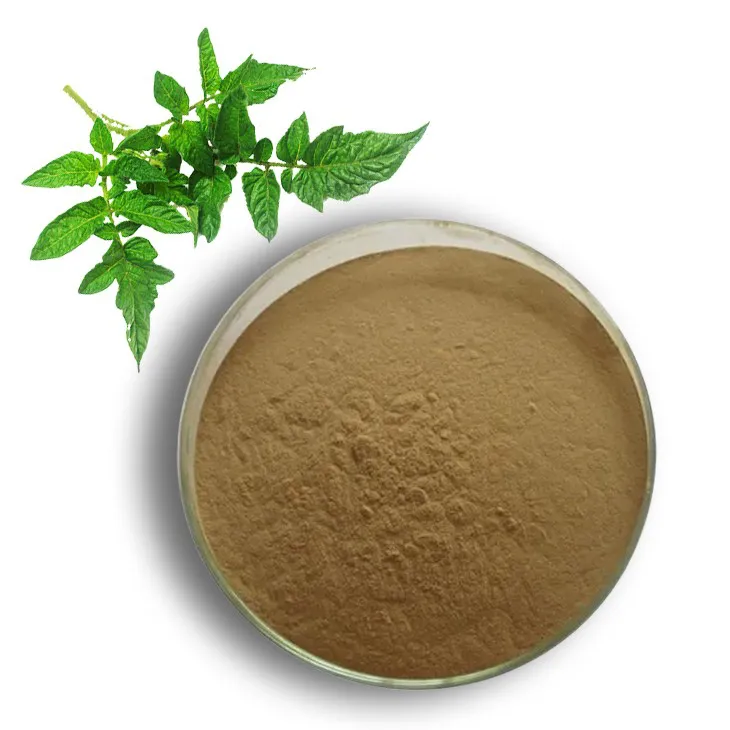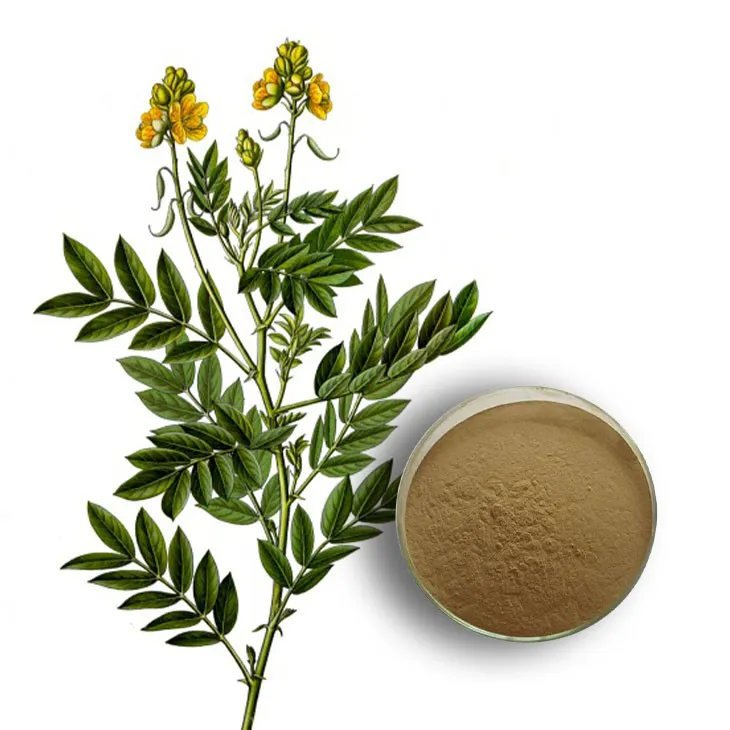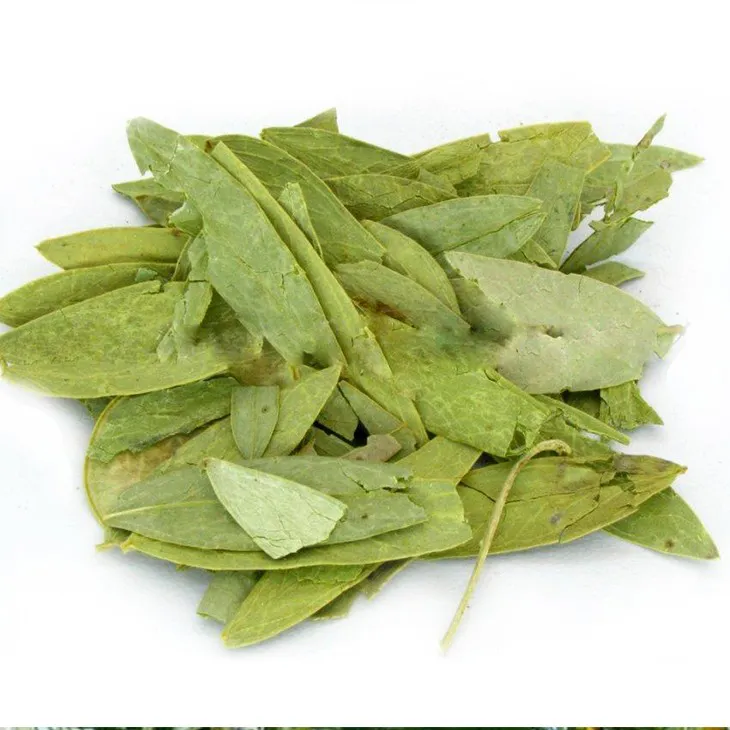- 0086-571-85302990
- sales@greenskybio.com
The best natural sources of senna leaf extract.
2024-11-26

1. Introduction to Senna Leaf Extract
Senna Leaf Extract has a long - standing history in traditional medicine across various cultures. It is renowned for its potential medicinal properties, particularly in relation to digestive health. The extract contains compounds that can act as a laxative, helping to relieve constipation. However, it is crucial to note that its use should be carefully regulated due to potential side effects if misused.

2. Senna obtusifolia: A Prominent Source
Senna obtusifolia is one of the key natural sources of Senna Leaf Extract. This plant is widely distributed in certain regions, especially in parts of China and Southeast Asia.
2.1 Geographic Distribution
In China, Senna obtusifolia can be found in some southern provinces. In Southeast Asia, countries such as Thailand, Vietnam, and Malaysia also have areas where this plant thrives. The specific geographical locations within these regions often have environmental conditions that are conducive to the growth of Senna obtusifolia. For example, areas with well - drained soil, sufficient sunlight, and appropriate rainfall are more likely to support healthy Senna obtusifolia plants.
2.2 Chemical Composition
The leaves of Senna obtusifolia contain various active compounds that are important for the formation of the effective senna leaf extract. These include anthraquinone glycosides, such as sennoside A and sennoside B. These compounds are responsible for the laxative effect of the extract. Additionally, the plant may also contain other substances like flavonoids and tannins, which may contribute to its overall medicinal properties.
2.3 Traditional and Modern Uses
- In traditional medicine, Senna obtusifolia has been used for centuries to treat constipation. The leaves were often prepared as a tea or in powdered form for consumption.
- Modern research has also focused on the potential of Senna obtusifolia - derived extract in the development of pharmaceutical products. However, strict quality control is required to ensure that the final product is safe and effective.

3. The Role of the Natural Environment
The natural environment in which Senna obtusifolia grows plays a crucial role in the formation of effective extract components.
3.1 Soil Conditions
The type of soil can significantly impact the quality of the plant and, consequently, the senna leaf extract. Well - drained, fertile soils rich in organic matter are ideal for Senna obtusifolia. For instance, loamy soils with a good balance of sand, silt, and clay can provide the necessary nutrients for the plant to produce high - quality leaves. Poor soil conditions, on the other hand, may lead to plants with lower levels of active compounds.
3.2 Climate Factors
- Temperature: Senna obtusifolia generally prefers warm to hot climates. Adequate sunlight is essential for photosynthesis, which is crucial for the production of the active compounds in the leaves. Extreme cold temperatures can stunt the growth of the plant and may affect the composition of the extract.
- Rainfall: Appropriate rainfall is necessary, but excessive waterlogging can be detrimental. The plant needs a balance between water availability and proper drainage to thrive. In regions with erratic rainfall patterns, supplementary irrigation may be required to ensure optimal growth.
3.3 Altitude and Topography
The altitude at which Senna obtusifolia grows can also influence its characteristics. Generally, plants grown at moderate altitudes may have different chemical compositions compared to those at lower or higher altitudes. The topography of the area, such as whether it is flat or hilly, can affect factors like soil erosion, water runoff, and sunlight exposure, all of which can in turn impact the quality of the plant and the extract.

4. Wild - Harvested Senna Plants
Wild - harvested Senna plants in certain regions can also be a valuable source of senna leaf extract when properly managed.
4.1 Sustainable Harvesting Practices
- Timing of Harvest: It is crucial to harvest the Senna plants at the right time. Harvesting too early may result in leaves with insufficient levels of active compounds, while harvesting too late may lead to a decline in quality due to factors such as leaf senescence.
- Harvesting Methods: Gentle and selective harvesting methods should be employed to avoid damaging the plants. This can help ensure the long - term survival of the wild Senna populations. For example, only a certain percentage of the leaves should be harvested from each plant, allowing the plant to continue to grow and reproduce.
4.2 Conservation Considerations
As wild - harvested Senna plants are a natural resource, conservation efforts are essential. Over - harvesting can lead to a decline in the wild populations, which can have ecological implications. Conservation measures may include the establishment of protected areas where Senna plants can grow undisturbed, as well as the promotion of sustainable harvesting practices among local communities.
5. Quality Control in Using Natural Senna Leaf Extract
Strict quality control is necessary to ensure safety and efficacy when using senna leaf extract from natural sources.
5.1 Identification and Authentication
Accurate identification of the Senna species is the first step in quality control. There are several Senna species, and misidentification can lead to products with different chemical compositions and potential safety risks. Authentication methods may include botanical identification by experts, as well as the use of modern techniques such as DNA barcoding.
5.2 Purity and Contamination
- The senna leaf extract should be free from contaminants such as heavy metals, pesticides, and other harmful substances. Regular testing for these contaminants is necessary, especially for extracts sourced from wild - harvested plants, as they may be more exposed to environmental pollutants.
- Ensuring the purity of the extract also involves verifying the concentration of the active compounds. This can be achieved through various analytical methods, such as high - performance liquid chromatography (HPLC), which can accurately measure the levels of sennoside A and sennoside B in the extract.
5.3 Standardization
Standardization of the senna leaf extract is crucial for consistent quality. This involves establishing specific standards for the content of active compounds, as well as other quality parameters such as moisture content, particle size, and solubility. Pharmaceutical and dietary supplement industries often require standardized extracts to ensure the safety and effectiveness of their products.
6. Conclusion
Senna leaf extract has significant potential in traditional and modern medicine. Senna obtusifolia, especially in parts of China and Southeast Asia, is a great natural source. The natural environment of the plant and sustainable management of wild - harvested plants are important factors in obtaining high - quality extract. However, strict quality control is non - negotiable to ensure the safety and efficacy of senna leaf extract from natural sources.
FAQ:
What are the main regions where Senna obtusifolia can be found?
Senna obtusifolia can be mainly found in parts of China and Southeast Asia. These regions provide a suitable natural environment for the growth of this plant, which is an important source for senna leaf extract.
Why is the natural environment important for the Senna obtusifolia plant as a source of senna leaf extract?
The natural environment is crucial for the Senna obtusifolia plant as it plays a significant role in the formation of effective extract components. Factors such as soil quality, sunlight, and water availability in the natural habitat can influence the chemical composition and potency of the senna leaf extract.
What should be considered when using wild - harvested Senna plants as a source of extract?
When using wild - harvested Senna plants as a source of extract, proper management is essential. This includes ensuring sustainable harvesting practices to avoid over - exploitation. Also, strict quality control measures need to be in place to guarantee the safety and efficacy of the senna leaf extract obtained from these plants.
How can we ensure the safety and efficacy of senna leaf extract from natural sources?
To ensure the safety and efficacy of senna leaf extract from natural sources, strict quality control is necessary. This involves proper identification of the plant species, monitoring the harvesting process, and testing the extract for purity and potency. Additionally, following good manufacturing practices during the extraction and processing of the leaves is crucial.
Are there any other plants that can be a source of senna leaf extract?
While Senna obtusifolia is a well - known source, there may be other related Senna species that could potentially be a source of senna leaf extract. However, further research is often needed to determine their suitability in terms of the quality and quantity of the extract components they can provide.
Related literature
- The Botany and Medicinal Properties of Senna Plants"
- "Senna Leaf Extract: Composition, Uses, and Quality Assurance"
- "Natural Sources of Bioactive Compounds: Focus on Senna"
- ▶ Hesperidin
- ▶ Citrus Bioflavonoids
- ▶ Plant Extract
- ▶ lycopene
- ▶ Diosmin
- ▶ Grape seed extract
- ▶ Sea buckthorn Juice Powder
- ▶ Fruit Juice Powder
- ▶ Hops Extract
- ▶ Artichoke Extract
- ▶ Mushroom extract
- ▶ Astaxanthin
- ▶ Green Tea Extract
- ▶ Curcumin
- ▶ Horse Chestnut Extract
- ▶ Other Product
- ▶ Boswellia Serrata Extract
- ▶ Resveratrol
- ▶ Marigold Extract
- ▶ Grape Leaf Extract
- ▶ New Product
- ▶ Aminolevulinic acid
- ▶ Cranberry Extract
- ▶ Red Yeast Rice
- ▶ Red Wine Extract
-
Lotus leaf extract
2024-11-26
-
Bilberry Extract
2024-11-26
-
Coix Seed Extract
2024-11-26
-
Rose Hip Extract
2024-11-26
-
Green Tea Extract
2024-11-26
-
Maca Extract
2024-11-26
-
Fenugreek Extract Powder
2024-11-26
-
Cactus Extract
2024-11-26
-
Hedyotis Diffusa Extract
2024-11-26
-
Eyebright Extract
2024-11-26





















